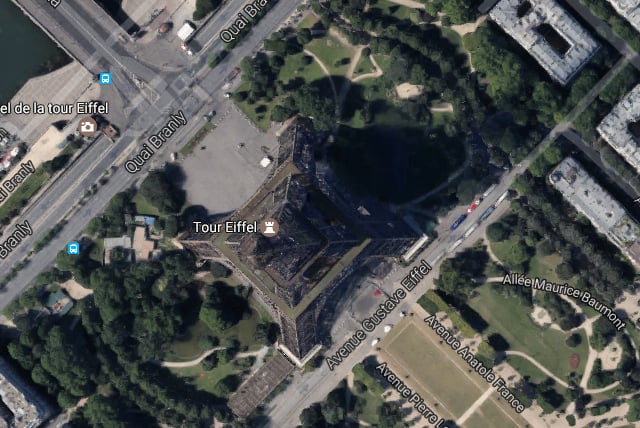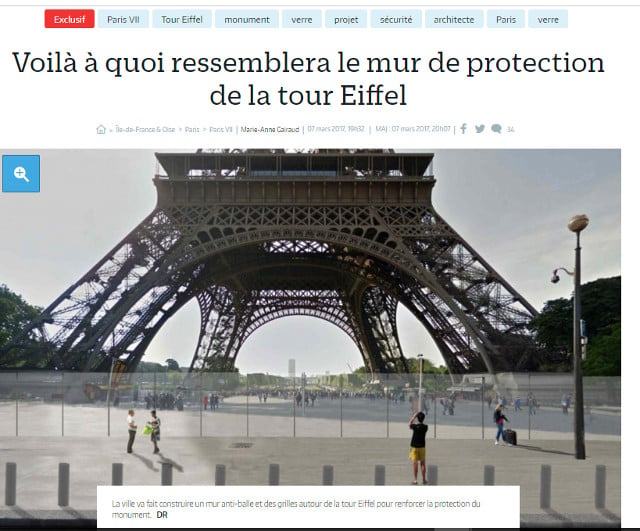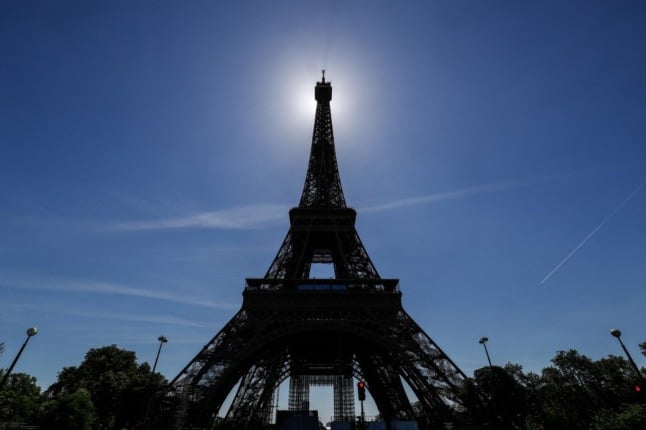If you've been past the Eiffel Tower lately you may have noticed that an unsightly metal fence surrounds it.
The unattractive structure is a temporary security measure that was introduced before the Euro 2016 football tournament.
However it has hung around until now in response to recent terror threats to the city’s main tourist attractions.
Authorities plan to replace the metal structure with a new three-metre high wall, made of bulletproof glass, which will be installed on the Northern and Southern sides, along the Quai Branly and Avenue Gustave-Eiffel.
The rest of the perimeter, on the east and the west sides, which is through the park, will surrounded by metal grills

As one of the city’s most visited and photographed tourist attractions, the glass used will be “extra clear white glass, because authorities don't want the added security measures to ruin the monument’s beauty.
Simulations of what these glass walls would look like have been published in Le Parisien newspaper to show the minimal visual impact the wall would have.
Le Parisien claims it has had access to the planning application put together by architects Dietmar Feichtinger.
#TourEiffel Voici à quoi ressemblera le nouveau mur de protection de la Tour Eiffel https://t.co/TAXgLvTy4Z@LeParisien_75 pic.twitter.com/Jhb0aR2wh4
— Pierre Quiroule (@Jean54631) March 7, 2017
Although the glass may be more attractive than the current metal fence, many Parisians are unhappy with the plans.
Twitter user Sylvie Gantois questioned the estimated €20 million cost of the project:
@S2theZee @le_Parisien Quant au financement du mur de verre ; Hidalgo, n'a pas encore calculé la facture ? ! Scandaleuse Maire de Paris….
— Sylvie GANTOIS (@SylvieGantois) March 8, 2017
Others protested the wall’s ugliness, condemning Hidalgo for her poor taste:
@le_Parisien Hidalgo n'a aucun sens de l'esthétique
— PhiloFer (@PhiloFer) March 7, 2017
Another twitter user worried that terrorists could find ways to get around the wall, with either
@le_Parisien #hidalgo Pas grave, les terroristes s'adapteront…Grenade, drônes…#GaucheTaree
— lived9 (@lived93) March 8, 2017




 Please whitelist us to continue reading.
Please whitelist us to continue reading.